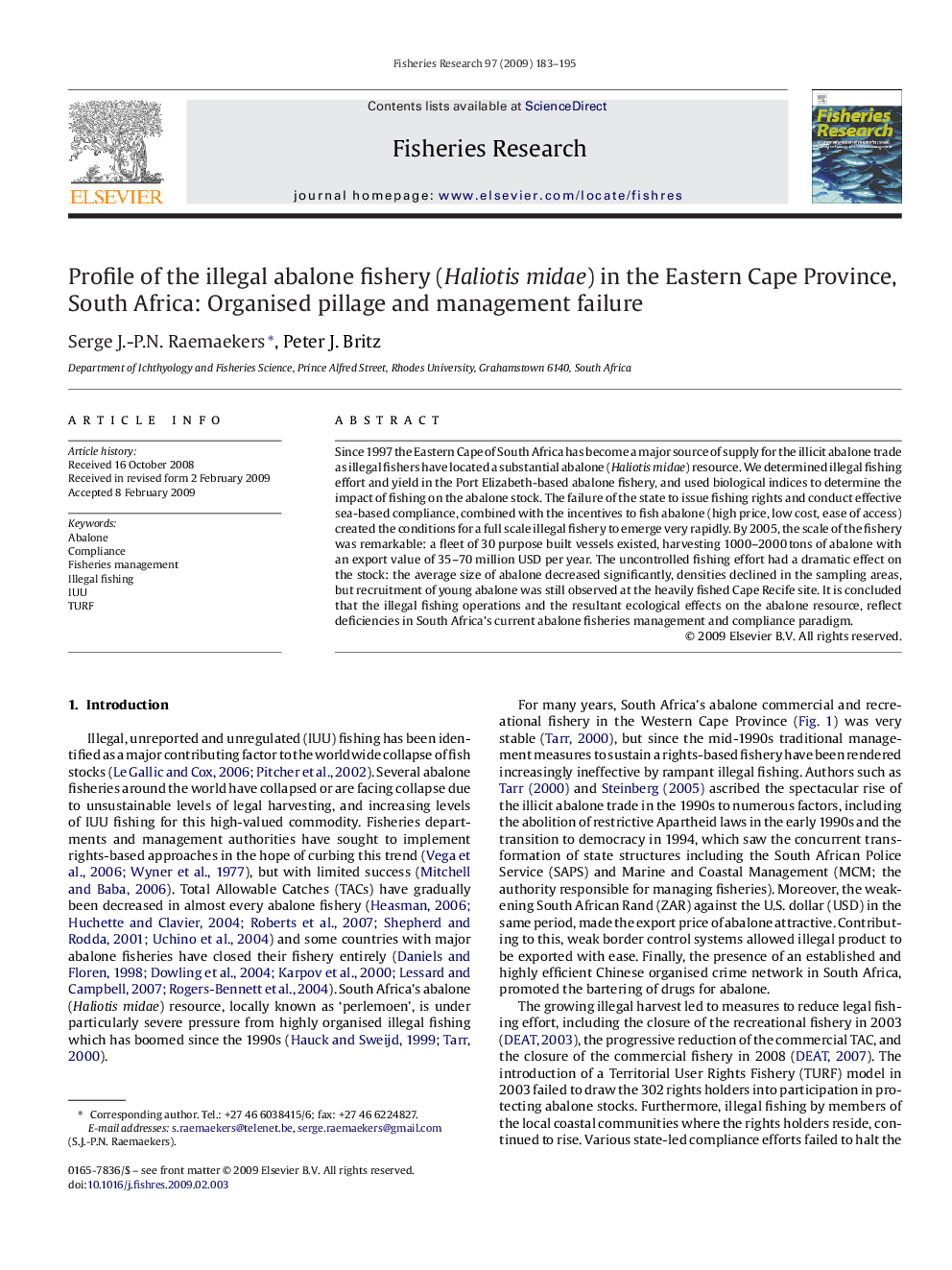| Article ID | Journal | Published Year | Pages | File Type |
|---|---|---|---|---|
| 4544213 | Fisheries Research | 2009 | 13 Pages |
Abstract
Since 1997 the Eastern Cape of South Africa has become a major source of supply for the illicit abalone trade as illegal fishers have located a substantial abalone (Haliotis midae) resource. We determined illegal fishing effort and yield in the Port Elizabeth-based abalone fishery, and used biological indices to determine the impact of fishing on the abalone stock. The failure of the state to issue fishing rights and conduct effective sea-based compliance, combined with the incentives to fish abalone (high price, low cost, ease of access) created the conditions for a full scale illegal fishery to emerge very rapidly. By 2005, the scale of the fishery was remarkable: a fleet of 30 purpose built vessels existed, harvesting 1000-2000Â tons of abalone with an export value of 35-70 million USD per year. The uncontrolled fishing effort had a dramatic effect on the stock: the average size of abalone decreased significantly, densities declined in the sampling areas, but recruitment of young abalone was still observed at the heavily fished Cape Recife site. It is concluded that the illegal fishing operations and the resultant ecological effects on the abalone resource, reflect deficiencies in South Africa's current abalone fisheries management and compliance paradigm.
Related Topics
Life Sciences
Agricultural and Biological Sciences
Aquatic Science
Authors
Serge J.-P.N. Raemaekers, Peter J. Britz,
